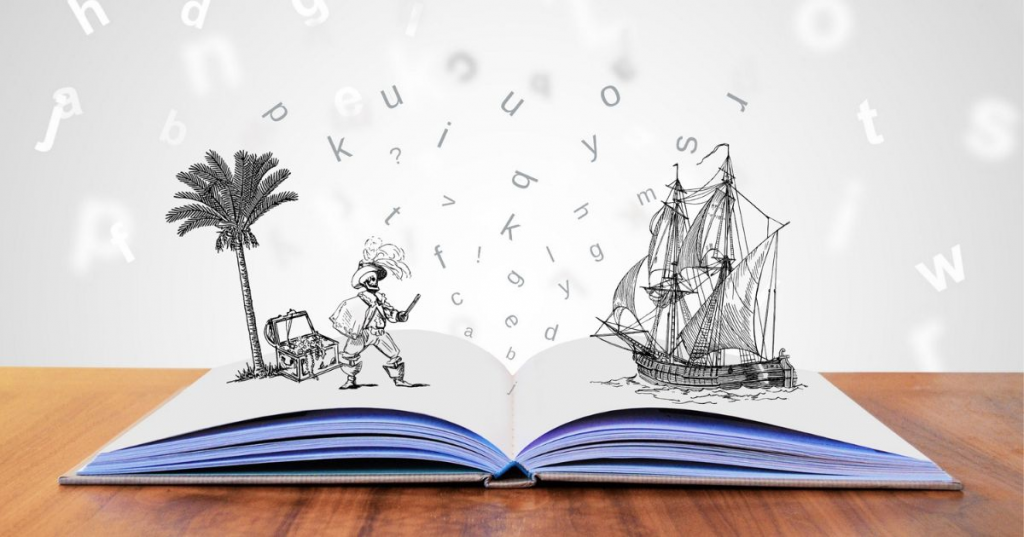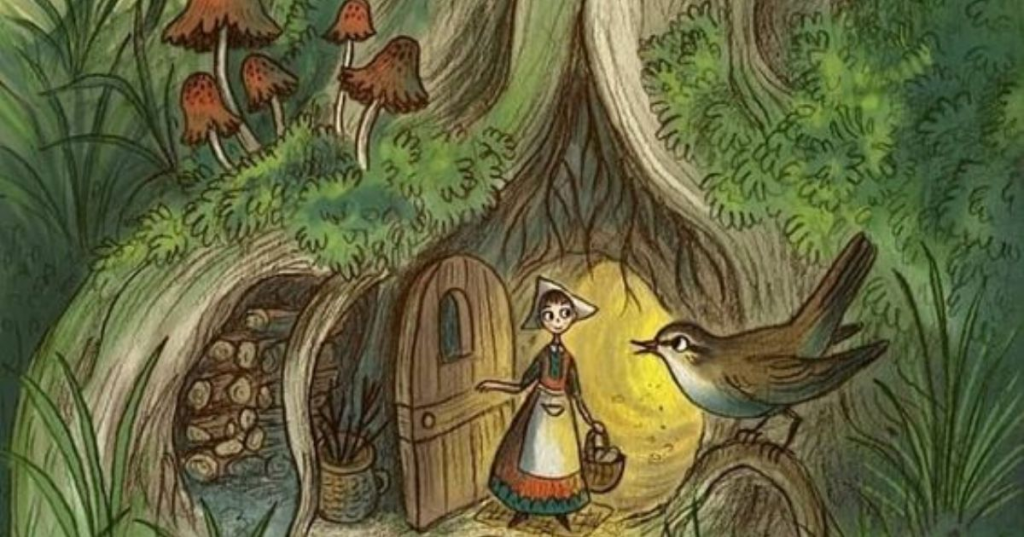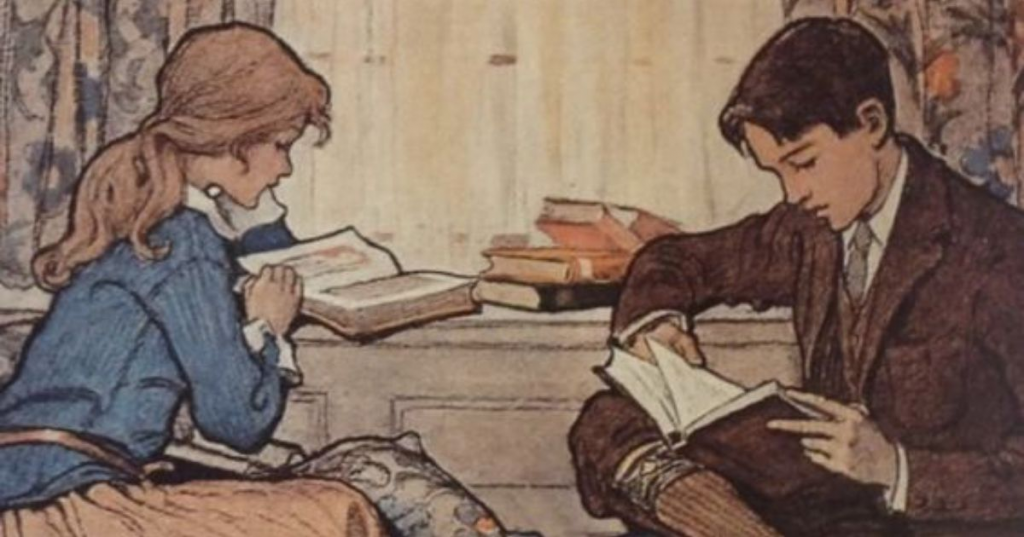The Art of Storytelling: Techniques & Steps to Mastering
Stories have captivated humanity since the dawn of time. From the flickering firelight illuminating cave paintings to the immersive worlds of modern cinema, storytelling has served as a powerful tool to entertain, educate, and connect us. It transcends mere words, weaving characters, emotions, and ideas into narratives that captivate and resonate with audiences. The art of storytelling lies in the ability to craft these narratives in a way that is engaging, meaningful, and memorable.
We will explore various aspects of storytelling, starting with an understanding of what it entails and the techniques that can elevate your storytelling skills. We will then delve into the essential steps for mastering this art, ensuring you can effectively connect with your audience.
What is The Art of Storytelling?

The art of storytelling is about crafting and presenting a narrative that captivates and engages an audience. It is an ancient and universal form of communication that transcends cultures and generations. Effective storytelling can evoke emotions, convey complex ideas, and inspire action.
Stories can evoke emotions, such as joy, sadness, anger, and empathy, making the audience feel connected to the narrative and its characters. It also plays a crucial role in cultural preservation, allowing societies to pass down values, traditions, and histories through generations. In education, stories simplify complex concepts and make learning more engaging and memorable. In marketing, politics, and leadership, storytelling is a persuasive tool that can influence opinions and motivate people to take action. Additionally, shared stories create a sense of community and belonging among audiences, fostering connections and building relationships.
The Art of Storytelling Techniques to Tell Great Stories
The art of storytelling transcends time and cultures, weaving narratives that grip our imaginations and leave a lasting impact. It's about more than just recounting events; it's about crafting a captivating experience that resonates with your audience. Here, we'll delve into some key techniques to elevate your storytelling and turn you into a master weaver of words (or images or actions, depending on your medium).
Show, Don’t Tell

One of the fundamental principles of storytelling is "show, don’t tell." Instead of merely stating facts, use descriptive language and actions to illustrate what is happening. This technique supports the audience to visualize the story and experience it more vividly.
When you describe the surroundings, small actions of the characters, and specific details, you not only provide information but also create a vivid and believable world. These details are drawn before the reader's eye to the characters’ psychology and motivations, as well as the atmosphere and situation of the story.
Let the characters’ actions and dialogue reveal their personalities and emotions. Instead of saying "She was very sad", you could describe: "She bowed her head, tears welled up in her eyes, and her voice was barely audible as she replied." Through actions and expressions, readers can perceive the sadness without being directly told.
Finally, trust the reader’s imagination. Don’t try to explain every detail; allow readers to infer and feel for themselves. It makes the story more engaging and creates a deeper interaction between the story and the reader.
From Telling to Showing
Imagine you want to describe a character who's angry. Here's the "telling" approach:
"Sarah was furious."
Now, let's "show" her anger:
Actions: "Sarah slammed her fists on the table, her knuckles white with rage."
Dialogue: "Get out of my sight!" she roared, her voice trembling with fury.
Physical Description: "Her face contorted, eyes blazing, every muscle in her body tensed with anger."
Internal Thoughts (limited use): "A red haze clouded Sarah's vision. All she saw was red." (Notice how even this internal thought hints at physical actions)
Why "Show, Don't Tell" Works
Engages the Reader: By using vivid descriptions of actions, dialogue, and sensory details, you allow the reader to experience the story alongside the characters.
Creates Emotional Connection: When you "show" emotions through actions and details, readers connect with the characters on a deeper level. They feel the character's anger, fear, or joy alongside them.
Paints a Picture: Rich descriptions allow readers to visualize the scene, characters, and atmosphere.
Strengthens Your Prose: "Showing" often leads to stronger verbs, descriptive adjectives, and figurative language, making your writing more vibrant and impactful.
If you master "Show, Don't Tell," you'll transform your storytelling from flat exposition to a captivating experience that draws readers into your world.
Pacing

Effective pacing includes varying the length of scenes, sentences, and descriptions to match the actions and emotions in the story. Fast-paced sequences can create excitement and urgency, while slower passages can build tension or provide reflection.
If a story moves too quickly, important details and character development can be lost. Conversely, if it moves too slowly, readers might become bored and disengage.
The Power of Pacing
Keeps Readers Engaged: A well-paced story balances moments of fast-paced action with slower sections for character development and emotional resonance. It keeps readers engaged and prevents them from getting bored or overwhelmed.
Builds Suspense: You can strategically slow down the pace before a big reveal or ramp it up during a chase scene, your story will be suspenseful and keep readers on the edge of their seats. Use short, punchy sentences and active verbs to create a sense of speed and intensity. For example, "He ran through the forest, branches snapping underfoot, heart pounding." The brief, vivid descriptions convey a sense of rapid movement and urgency.
Creates Emotional Impact: Slower pacing leads readers to absorb emotional moments and connect with characters on a deeper level. For instance, "She sat by the window, watching the raindrops trace patterns on the glass, lost in memories of a happier time." Conversely, a faster pace can cause a sense of urgency and excitement.
Reflects the Mood and Atmosphere: The pacing should complement the mood you're trying to create. A horror story might have long stretches of slow-building dread punctuated by bursts of fast-paced action. A calming scene might have a gentle, unhurried pace.
Mastering the Art of Pacing
Vary Sentence Length and Structure: A mix of short, action-packed sentences and longer, descriptive ones can contrive a natural ebb and flow in your pacing.
Utilize Paragraph Breaks and White Space: Strategic use of white space can signal a shift in pace or indicate a pause for reflection. Strategic breaks can heighten suspense and keep readers eager to turn the page. Ending a chapter on a cliffhanger or a moment of high tension can compel readers to continue reading. Conversely, concluding a scene on a reflective or resolved note can give readers a moment to pause and absorb the story.
Control the Level of Detail: Focus on the most important details during fast-paced moments. Conversely, linger on descriptive details during slower sections to bring into being a sense of immersion.
Dialogue as a Pacing Tool: Dialogue can be used to speed things up or slow things down. Rapid exchanges can quicken the pace and convey tension or conflict. For example:
"Where were you last night?" "I told you, I was at the office." "Don't lie to me. I saw your car."
This quick back-and-forth creates a sense of urgency and tension. In contrast, longer, more contemplative dialogue can slow the pace and deepen the reader’s understanding of the characters.
Point of View

Point of View (POV) from which the story is told significantly influences how the audience perceives the narrative. Whether it’s first-person or third-person, the point of view shapes the reader’s connection to the characters and events.
The Power of Point of View
Shapes Reader Perception: POV dictates how readers perceive characters, their motivations, and trustworthiness. Are you seeing the world through the eyes of a cunning villain or a wide-eyed protagonist? Your choice of POV shapes the lens through which readers interpret the story.
Creates Intimacy and Connection: First-person POV allows readers to get inside a character's head, experiencing their thoughts, feelings, and emotions firsthand. So, it fosters a sense of intimacy and connection between the reader and the characters.
Builds Suspense and Mystery: Limited third-person POV restricts the reader's knowledge of what a specific character perceives. It can create suspense and mystery as readers are left to piece together the bigger picture alongside the character.
Offers Narrative Flexibility: By switching POVs between characters, you can offer a broader perspective on events and unveil different sides of the story.
Common POV Choices
First-person: The story is narrated by a character using "I" and "me." For example, "I raced through the forest, the sound of my pursuers echoing behind me." This POV accesses experience events directly through the narrator’s eyes, but it can be limiting as it confines the story to the narrator’s knowledge and experiences.
Second Person POV: Second person POV uses "you," making the reader a character in the story. This POV is less common but can be very engaging and immersive when used effectively. It can create a sense of immediacy and personal involvement. For instance, "You walk down the empty street, your footsteps echoing in the silence." This POV is challenging to maintain over a long narrative and can feel intrusive if not handled carefully.
Third-person limited: The story is narrated from an outside perspective but focuses on the thoughts and feelings of one character. ("Sarah's heart pounded in her chest as she crept through the shadows."). This POV has deeper character development while still providing some flexibility in narrative scope.
Third-person omniscient: Third-person omniscient, on the other hand, provides a god-like perspective, with the narrator having access to the thoughts, feelings, and experiences of all characters. It offers a broader understanding of the story world and complex plotlines. For instance, "As she walked down the empty street, unaware that someone was watching her from the shadows, her thoughts wandered back to the day's events." This perspective can be powerful but requires careful management to avoid overwhelming the reader with too much information.
Choosing the Right POV
The most effective POV depends on the story you're trying to tell and the effect you want to achieve. Consider:
Level of intimacy: Do you want readers to feel a deep connection with a specific character? First-person or limited third-person might be ideal.
Suspense and mystery: Do you want to create a sense of intrigue? Limited third-person can keep readers guessing.
Multiple perspectives: Does your story have complex dynamics or multiple storylines? Third-person omniscient is suitable for you to explore them all.
Consistency and Shifts in POV
Maintaining consistency in POV is momentous to avoid confusing the reader. However, deliberate shifts in POV can be effective if clearly indicated and purposefully used. For instance, alternating chapters between different characters’ perspectives can provide diverse viewpoints and deepen the reader's understanding of the story.
Imagery

Imagery is indeed an art form in storytelling techniques. It's the magic that approves writers to transcend simple words and create vivid pictures, emotions, and sensory experiences in the reader's mind. Descriptive imagery engages the audience’s senses and immerses them in the story’s world.
The Power of Imagery
Brings Your Story to Life: Vivid imagery paints a picture in the reader's mind, transporting them directly into the world of your story. They can "see" the characters, settings, and atmosphere you've created. When readers can visualize scenes, hear sounds, feel textures, and even taste and smell the environment, the story becomes more vivid and real.
Evokes Emotions: Imagery isn't just visual; it can engage all five senses. By describing sounds, smells, tastes, textures, and even emotions themselves, you can create a powerful emotional connection with your reader. Describing a setting sun, the scent of blooming flowers, or the chill of a winter wind can trigger feelings of nostalgia, joy, sadness, or tension, deepening the reader’s emotional connection to the story.
Aids in Symbolism and Themes: Imagery can also be used to reinforce themes and symbols in the story. Recurrent images or motifs can highlight significant ideas and add layers of meaning, enriching the reader’s understanding and interpretation of the narrative.
Deepens Character Development: Imagery can be used to portray not just a character's physical appearance but also their personality, mood, and inner world. A character's cluttered desk can hint at their disorganization, while a faint smile lingering on their lips can suggest hidden emotions.
Enhances Atmosphere and Mood: Imagery helps set the tone and mood of the narrative. A description of a dark, stormy night can create a sense of foreboding, while a sunny, vibrant meadow can evoke happiness and peace. Effective imagery establishes the atmosphere and prepares the reader for the events that follow.
Enhances Reader Engagement: Vivid imagery keeps readers engaged and invested in the story. They become curious to explore the world you've built and anticipate what sensory details await them on the next page.
How to Use Imagery Effectively
Figurative Language: Similes, metaphors, and personification can create imaginative comparisons that spark the reader's visual sense. ("The fog crept in like a silent phantom, swallowing the trees whole.")
Sensory Details: Engage all five senses! Describe the musty smell of old books in a library, the rough texture of a character's calloused hands, or the sweet melody of birdsong in the morning.
Strong Verbs and Adjectives: Don't settle for generic words. Choose verbs that evoke action and specific adjectives that paint a clear picture. ("The wind howled ferociously" is more evocative than "The wind blew.")
Examples of Powerful Imagery
"The midday sun beat down mercilessly, turning the asphalt into a shimmering mirage." (Heat)
"Her laughter tinkled like wind chimes, a melody that chased away the shadows." (Joy)
"The air hung heavy with the metallic tang of blood and the acrid bite of smoke." (War)
Remember
Don't overdo it! Too much imagery can bog down the narrative. Use it strategically to highlight important details and evoke emotions at key moments in your story.
Metaphor and Simile

Comparing two unlike things through metaphors and similes adds depth and understanding to the narrative. These figures of speech can make abstract concepts more tangible and relatable. Understanding and mastering these techniques can greatly improve your storytelling skills.
Metaphor
A metaphor directly compares two unrelated things by stating that one is the other, without using "like" or "as." This technique can create strong, memorable imagery and convey complex ideas more simply and powerfully.
Example: "Her eyes were sparkling diamonds" (They aren't literally diamonds, but they shine brightly like diamonds.)
Simile
A simile uses words like "like" or "as" to compare two things. The reader easily visualizes something unfamiliar by comparing it to something familiar.
Example: "The fog rolled in like a thick blanket, muffling all sound" (The fog is similar to a blanket in how it covers and conceals.)
Why They Matter
Fresh Perspective: Metaphors and similes offer a fresh perspective on familiar things, helping readers see them in a new light. Your writing will be more engaging and memorable.
Emotional Connection: Creating vivid imagery, metaphors, and similes can evoke emotions in your readers. So they can connect with your story on a deeper level.
Sensory Details: Metaphors and similes can incorporate sensory details, making your descriptions richer and more immersive.
Abstract Concepts: These tools can help explain abstract concepts by comparing them to something concrete and easier to understand.
Using Metaphors and Similes effectively
Quality Over Quantity: Don't overuse metaphors and similes. Aim for well-chosen comparisons that truly enhance your story.
Originality: Strive for fresh and original comparisons, avoiding cliches like "brave as a lion" or "happy as a clam."
Relevance: Ensure your metaphors and similes are relevant to the context of your story and make sense within the established world.
Examples in Storytelling
Metaphor: In J.K. Rowling's Harry Potter series, Hogwarts is often described as a "castle in the sky," emphasizing its grandeur and magical nature.
Simile: In Harper Lee's To Kill a Mockingbird, Scout Finch compares her neighbor Boo Radley to a "mockingbird," highlighting his innocence and vulnerability.
Metaphors and similes are tools to enhance your storytelling, not a replacement for clear and concise writing. Use them strategically to create vivid imagery, evoke emotions, and add depth to your narrative.
Foreshadowing

Hinting at events to come builds anticipation and prepares the audience for future developments. Foreshadowing can create suspense and keep the audience engaged as they look for clues and try to predict the outcome. Subtle hints woven into the narrative can make the story more cohesive and satisfying when these hints come to fruition.
The Power of Foreshadowing
Rewards Attentive Readers: Foreshadowing rewards readers who pay close attention. They get a sense of satisfaction when they pick up on the clues you've left behind and can predict future events.
Adds Depth and Complexity: Foreshadowing can be layered and subtle, hinting at not just major plot points but also character motivations and thematic elements.
Creates a Sense of Inevitability or Surprise: Foreshadowing can be used to foreshadow both expected and unexpected events. It can develop a sense of looming dread if the foreshadowed event is negative, or a thrill of anticipation if it's positive.
Types of Foreshadowing
Direct Foreshadowing Direct foreshadowing includes explicitly stating or hinting at what will happen later in the story. It can be done through dialogue, narration, or even symbolic elements.
Example: In Shakespeare's Romeo and Juliet, Romeo says, "My mind misgives some consequence yet hanging in the stars." It directly hints at the tragic events to come.
Indirect Foreshadowing Indirect foreshadowing is more subtle and involves clues or hints that the audience may not immediately recognize as foreshadowing. These clues become clear only after the event has occurred.
Example: In J.K. Rowling's Harry Potter series, the recurring mention of the Vanishing Cabinet in earlier books foreshadows its crucial role in the sixth book.
Symbolic Foreshadowing Symbolic foreshadowing uses symbols, settings, or situations to hint at future events. This type of foreshadowing often requires readers to interpret the meaning behind the symbols.
Example: In George Orwell's Animal Farm, the pigs' gradual adoption of human behaviors foreshadows the eventual corruption of their leadership.
Red Herring A red herring is a misleading clue that diverts the audience's attention from the actual events that will unfold. This technique adds an element of surprise and keeps the audience guessing.
Example: In Agatha Christie's The Murder of Roger Ackroyd, numerous red herrings mislead the reader about the true identity of the murderer.
Foreshadowing should be subtle and well-woven into your narrative. Avoid heavy-handed clues that give away the plot. The goal is to pique the reader's interest, not spoil the surprise.
Steps to Mastering the Art of Storytelling

Storytelling is an art form with the power to transport us, teach us, and move us. It's a skill anyone can develop, and with dedication and practice, you can become a master weaver of narratives. Here's a roadmap to guide you on your storytelling journey:
Step 1 - Understand Your Audience
Before crafting your story, consider who your audience is. Understand their interests, values, and expectations. As you gain more experience and interact with different people, you'll refine your ability to tell your stories for maximum impact. Tailoring your story to resonate with your specific audience ensures that it will be engaging and relevant.
Step 2 - Define Your Purpose
Clearly define the purpose of your story. Are you trying to entertain, inform, persuade, or inspire? Having a clear goal will guide the direction of your narrative and you can focus on the most important elements.
Ask Yourself "Why?": Why are you telling this story? What message do you want to convey?
Consider Your Audience: Who are you telling the story to? What impact do you want to have on them?
Think About Genre: The genre of your story (comedy, thriller, historical fiction) can influence your purpose. However, purpose can transcend genre conventions.
Refine and Refocus: Your purpose might evolve as you develop your story. Regularly revisit your central message and ensure the narrative elements support it.
Step 3 - Create a Strong Structure
A well-structured story has a clear beginning, middle, and end. Start with an engaging introduction to capture attention, develop the plot with rising action and conflict, and conclude with a satisfying resolution. This structure assists in maintaining coherence and keeps the audience invested.
Step 4 - Develop Compelling Characters
Characters are the heart of any story. Create characters that are relatable, complex, and dynamic. Give them clear motivations and conflicts that drive the narrative forward. Well-developed characters make the story more engaging and emotionally impactful.
Step 5 - Incorporate Dialogue
Dialogue brings characters to life and advances the plot. Use realistic and engaging conversations to reveal character traits, relationships, and conflicts. Effective dialogue can make the story more dynamic and relatable.
Step 6 - Edit and Revise
Great storytelling involves editing and revising. Review your story to ensure it is clear, concise, and free of unnecessary details. Focus on strengthening the narrative, refining characters, and enhancing descriptions. Feedback from others can provide valuable insights for improvement.
Step 7 - Practice Regularly
Storytelling is a skill that improves with practice. Regularly share your stories with others, whether through writing, speaking, or other mediums. Learn from each experience, and continuously refine your techniques.
Take the next step with Skilltrans. These related courses are your gateway to mastery of the art of storytelling. Please click on the course name below to learn more:
Enjoy Public Speaking and Presentations
This course will help you become a confident speaker, enabling you to reach new heights and transform your perspective on public speaking. By completing this course, you will not only learn to enjoy speaking in front of an audience but also command the room with confidence. There's no doubt that anyone can become a confident speaker by mastering the tools early and taking action.
This course is for those who want to build a following, be social media influencers and communicate better. Use the tips and tools in this course to become better every single day.
Leher is a video social network for young professionals, content creators, influencers and vloggers.
The course will guide you through a 15 day program to improve your communication on video.
Winning Communication Skills for Telephone, Conference Calls
What will students achieve or be able to do after taking this course?
Communicate effectively using the phone with clients, customers, colleagues and bosses
Avoid telephone blunders that strike others as rude and unprofessional
Speak effectively on business conference calls
Present confidently on Skype and FaceTime calls
Use the telephone effectively in all aspects of business life
Conclusion
The art of storytelling is a timeless and powerful tool that transcends cultures and generations, capturing the essence of human experience and connecting people on a profound level. Effective storytellers know how to captivate their audience with a compelling narrative, using techniques like vivid descriptions, strategic pacing, and relatable themes.
Embrace the steps outlined here, experiment with different techniques, and most importantly, find your voice. Countless stories are waiting to be told, emotions waiting to be evoked, and connections waiting to be forged.
With dedication and practice, you'll transform from a storyteller in training to a weaver of captivating narratives. So, pick up your pen, step onto the stage, or fire up your camera – the world awaits the stories you have to tell.
The art of storytelling requires more than hard work and creativity. So, you can find the essentials to start this exciting journey by signing up for Skilltrans courses. We have many courses at preferential prices just for you. Don't hesitate to register with us now.

Meet Hoang Duyen, an experienced SEO Specialist with a proven track record in driving organic growth and boosting online visibility. She has honed her skills in keyword research, on-page optimization, and technical SEO. Her expertise lies in crafting data-driven strategies that not only improve search engine rankings but also deliver tangible results for businesses.



